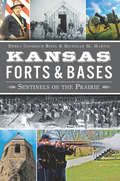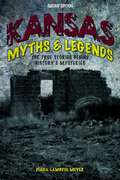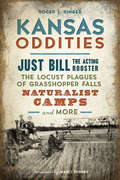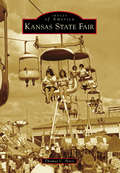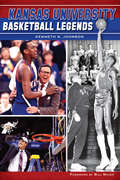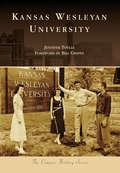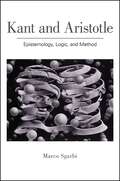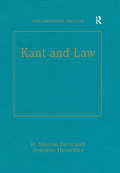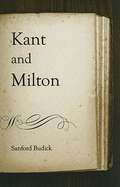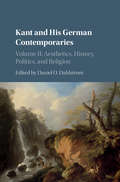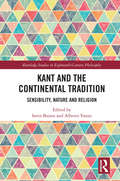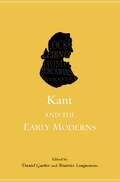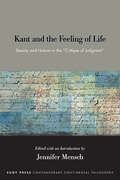- Table View
- List View
Kansas City's Parks and Boulevards
by Dona Boley Patrick AlleyA fast-growing frontier community transformed itself into a beautiful urban model of parks and boulevards. In 1893, East Coast newspapers were calling Kansas City "the filthiest in the United States." The drainage of many houses emptied into gullies and cesspools. There was no garbage collection service, and herding livestock through the city was only recently prohibited. Through the diligent efforts of a handful of recently arrived citizens, political, financial, and botanical skills were successfully applied to a nascent parks system. "Squirrel pastures," cliffs and bluffs, ugly ravines, and shanties and slums were turned into a gridiron of green, with chains of parks and boulevards extending in all directions. Wherever the system penetrated well-settled localities, the policy was to provide playgrounds, tennis courts, baseball diamonds, pools, and field houses. By the time the city fathers were finished, Kansas City could boast of 90 miles of boulevards and 2,500 acres of urban parks.
Kansas Facts and Symbols
by Kathleen W. DeadyThis book presents information about the state of Kansas, its nickname, motto, and emblems.
Kansas Forts and Bases: Sentinels on the Prairie
by Debra Goodrich Bisel Michelle M. MartinThe relationship between Kansas and the science of war is ingrained, consistent and evident, yet it seems antithetical to the quiet, conservative farmer who is the quintessential image of the state. It is not. The same values created both, and both created Kansas. From early exploration of America, Bleeding Kansas, the Civil War and the Plains Indian wars to the world wars and the modern era, the forts and bases of the Sunflower State have been central to America's defense. Beginning with Fort de Cavagnial in 1744 through to the defunct fields of Cold War missile silos, historians Debra Goodrich Bisel and Michelle M. Martin provide a guide to the forts and posts throughout Kansas.
Kansas Music: Stories of a Rich Tradition
by Debra Goodrich BiselDespite its sparse population, Kansas is well represented in the annals of music history. The state claims some of the most popular acts from the past century, including Kansas, Count Basie, Big Joe Turner, Martina McBride, Melissa Etheridge and Charlie Parker. A wide variety of genres plays and prospers here, from blues to bluegrass. Beloved venues from mega-festivals like Walnut Valley to jam sessions just off the front porch preserve the state's tuneful heritage. Join Deb Bisel in celebrating this lyrical legacy, from "Home on the Range" to "Dust in the Wind" and beyond.
Kansas Myths and Legends: The True Stories behind History's Mysteries (Legends of the West)
by Diana Lambdin MeyerKansas Myths and Legends explores unusual events, unsolved crimes, and legends in Kansas&’s history. Each episode included in the book is a story unto itself, and the tone and style of the book is lively and easy to read for a general audience interested in Texas history. The more than a dozen stories answer questions such as: Is it possible that a family of four living on the Kansas prairie got away with serial murder for more than three years and escaped to another part of the country to continue their killing spree? Are there still remnants of a late widow&’s fortune buried throughout her property? Is the well-marked grave of Buffalo Bill Cody indeed his final resting place, or did some loyal friends surreptitiously remove him from Colorado and fulfill his last wish to be buried near his namesake town? From rumors of the Dalton gang&’s buried treasures to the disappearance of an entire town, Kansas Myths and Legends makes history fun and pulls back the curtain on some of the state's most fascinating and compelling stories.
Kansas Oddities: Just Bill The Acting Rooster, The Locust Plagues Of Grasshopper Falls, Naturalist Camps And More
by Roger L RingerTouch down at Dead Cow International Airport and sample the state's bumper crop of bizarre history. The most commonplace sights contain unlikely stories, from the bulldozer's Morrowsville origins to the sunflower's journey from outlawed weed to state symbol. Some of this heritage lies submerged or buried, like the world's only saltwater spring, which now sits at the bottom of a man-made lake. Rumored caches of the Fleagle Gang's loot still draw treasure hunters in spades. From mariachi legends to rodeo roundups, Roger Ringer gathers in a vast and varied harvest of Kansas lore.
Kansas State Fair
by Thomas C. PercyThe rich history of the Kansas State Fair comes to life in Images of America: Kansas State Fair through photographs from the 1860s to the present. The fair first opened its gates to visitors in 1863 and welcomed all to behold the "Pride of Kansas" until its untimely demise in 1875. In 1913, the Kansas Legislature revived the fair and selected the city of Hutchinson as the exposition's permanent home. Centrally located, Hutchinson has proved an ideal setting. Every year during September, hundreds of thousands of fairgoers flock to the grounds to compete in agricultural or livestock competitions, sell their wares, seek out thrills on the midway amusements, or learn more about the state and its resources. Whatever their motives, all fairgoers leave with a sense of fulfillment.
Kansas Tycoon Emerson Carey: Building an Empire from Coal, Ice and Salt
by Lynn Ledeboer"I've seen a fly make a bull switch his tail" is a homespun quip attributed to Emerson Carey, the powerful salt magnate of Hutchinson, Kansas. True or not, the quote epitomizes the fearless and tenacious character of the legend who became Reno County's benefactor. Young, awestruck Carey arrived in boomtown 1880s Hutchinson and went on to create an immense empire. Coal, ice, salt, strawboard, egg cases, bags, soda ash and streetcars--he presided over it all. From Carey's sleeping in a coal yard with a quarter in his pocket to the founding of the exclusive Willowbrook community and attaining a net worth of more than $15 million, authors Lynn Ledeboer and Myron Marcotte relate the epic story.
Kansas University Basketball Legends (Sports)
by Kenneth N. Johnson Bill MayerThe University of Kansas's men's basketball team is one of the oldest and most successful in the history of college basketball; the very inventor of the sport, Dr. James Naismith, was KU's first coach. Its long and illustrious history began in 1898 and includes some of the biggest names in the game, from legends like Wilt Chamberlain to "secret weapons" like Andrea Hudy, the only female strength and conditioning coach in the division. Longtime Jayhawk enthusiast Kenn Johnson offers up a unique and in-depth look at the players, coaches and other personalities who helped make the University of Kansas basketball program the unparalleled tradition it is today.
Kansas Wesleyan University (Campus History)
by Bill Graves Jennifer ToelleOn September 15, 1886, Kansas Wesleyan University opened its doors for the purpose of higher education. Through strategic plans and successful fundraising campaigns, the campus has grown and evolved remarkably over the past 130 years. The university has employed numerous skilled and passionate faculty members who mentored students toward academic success. As each academic year passes, the school marks notable achievements with pride in areas of academics and athletics as it also stays on the cutting edge of science and technology. Although Kansas Wesleyan has endured struggles, challenges have been promptly met with innovative leadership that laid the groundwork to propel the campus forward, demonstrating perseverance and resilience to craft a lasting legacy. As alumni expand throughout other communities, they carry the university with them. The images within this pictorial history illustrate the university’s institutional history and the enduring Coyote spirit.
Kansas: A History
by Kenneth DavisNo state's creation was more dramatic, more at the center of national attention, more involved in fundamental moral conflict, than that of Kansas. In a sense, the state's history began with the arrival of the first Puritans of New England and the first slaves of Virginia. The States And The Nation Series, of which this volume is a part, is designed to assist the American people in a serious look at the ideals they have espoused and the experiences they have undergone in the history of the nation.
Kansas: In the Heart of Tornado Alley
by Jessica Nellis Craig Torbenson Jay M. Price Sadonia CornsBack in 1915, Snowden D. Flora of the US Weather Bureau wrote, "Kansas has been so commonly considered the tornado state of the country that the term 'Kansas cyclone' has almost become a part of the English language." Flora's words still seem to ring true. Whether called a twister, a tornado, a vortex, or cyclone, these catastrophic events have shaped lives in the Sunflower State for generations. Just a few destructive moments forever changed places such as Irving, Udall, Topeka, Andover, and Greensburg. Even before Dorothy Gale in The Wizard of Oz helped equate the tornado with Kansas, the turbulent nature of local weather seemed to parallel an equally turbulent history, with the fury of people such as John Brown compared to a cyclone. Even if they have never seen a funnel cloud themselves, those who live in Kansas have come to accept the twister as a regular and always unpredictable neighbor.
Kant Dictionary
by Morris StockhammerThe material contained in this dictionary is designed to provide a concise tool of penetration into Kant's system of thought, a system that by virtue of its complexity and linguistic difficulties has long been almost the exclusive property of scholars. Professor Stockhammer has extracted from the vast body of Kant's literature the essential concepts, terms, meanings and definitions of his system, and has arranged them in such a way as to give a clear exposition of Kant's dualistic philosophy. The author, a Viennese Doctor of Philosophy, is one of the eminent Kantians of our time and author of many works in the field. The Kant Dictionary is an extensive collaboration of Kant's philosophy by Morris Stockhammer. Morris Stockhammer is a Professor and a Viennese Doctor of Philosophy. Professor Stockhammer has extracted from the vast body of Kant's literature the essential concepts, terms, meanings and definitions of his system and has arranged them in such a way as to give a clear expositon of Kant's dualistic philosophy.
Kant and Aristotle: Epistemology, Logic, and Method
by Marco SgarbiKant and Aristotle reassesses the prevailing understanding of Kant as an anti-Aristotelian philosopher. Taking epistemology, logic, and methodology to be the key disciplines through which Kant's transcendental philosophy stood as an independent form of philosophy, Marco Sgarbi shows that Kant drew important elements of his logic and metaphysical doctrines from Aristotelian ideas that were absent in other philosophical traditions, such as the distinction of matter and form of knowledge, the division of transcendental logic into analytic and dialectic, the theory of categories and schema, and the methodological issues of the architectonic. Drawing from unpublished documents including lectures, catalogues, academic programs, and the Aristotelian-Scholastic handbooks that were officially adopted at Königsberg University where Kant taught, Sgarbi further demonstrates the historical and philosophical importance of Aristotle and Aristotelianism to these disciplines from the late sixteenth century to the first half of the eighteenth century.
Kant and Cosmopolitanism
by Pauline KleingeldThis is the first comprehensive account of Kant's cosmopolitanism, highlighting its moral, political, legal, economic, cultural and psychological aspects. Contrasting Kant's views with those of his German contemporaries and relating them to current debates, Pauline Kleingeld sheds new light on texts that have been hitherto neglected or underestimated. In clear and carefully argued discussions, she shows that Kant's philosophical cosmopolitanism underwent a radical transformation in the mid 1790s and that the resulting theory is philosophically stronger than is usually thought. Using the work of figures such as Fichte, Cloots, Forster, Hegewisch, Wieland and Novalis, Kleingeld analyses Kant's arguments regarding the relationship between cosmopolitanism and patriotism, the importance of states, the ideal of an international federation, cultural pluralism, race, global economic justice and the psychological feasibility of the cosmopolitan ideal. In doing so, she reveals a broad spectrum of positions in cosmopolitan theory that are relevant to current discussions of cosmopolitanism.
Kant and International Relations Theory: Cosmopolitan Community-building (Routledge Innovations in Political Theory)
by Dora IonThis book challenges popular international relations theories that claim to be based on the political writings of Immanuel Kant, and sheds new light on the philosopher's perspective on peace.Through an analysis of Kant's philosophical work and political traditions of his time, as well as of neglected concepts and theory, this book reappraises modern perspectives on his work. Kant advocated a cosmopolitan community building perspective of peace and international relations that considered issues that are now significant topics of debate such as state sovereignty and unequal access to resources. This book reveals how Kant's political views translate into a vision of international relations that cannot be associated with the democratic and neoliberal theories of peace which until now have claimed Kant's legacy. While the democratic peace theory continues to inspire policy-making, Kant's predictions on war and peace ultimately prove to be most appropriate for the current issues of globalization and diversity.Offering new insights into the meaning of peace and war in international relations, Kant and International Relations Theory is an invaluable resource for students and scholars of international relations and political theory, as well as for those interested in Kant's scholarship.
Kant and Law (Philosophers And Law Ser.)
by B.Sharon ByrdImmanuel Kant's legal philosophy and theory have played an enormous role in the development of law since the eighteenth century. Although this influence can be seen primarily in German law and in the law of nations which have traditionally been oriented toward German legal development, today Kant's philosophy has experienced a Renaissance in the Anglo-American legal world. This anthology collects what the editors believe to be the very best of articles on Kant's legal theory, with an emphasis on his Metaphysics of Morals of 1797. In particular the articles relate to: 1) the nature of law and justice, 2) private law, 3) public law, 4) criminal law, 5) international law, and 6) cosmopolitan law.
Kant and Milton
by Sanford BudickThis book brings to bear new evidence and long-neglected materials to show the importance of Kant's encounter with Milton's poetry to the formation of Kant's moral and aesthetic thought.
Kant and Stoic Ethics
by Melissa MerrittAlthough it is widely recognised that many concepts central to Kant's ethics have a Stoic provenance, there has still been relatively little close scholarly examination of the significance of Stoic ethics for the development of Kant's philosophy over the Critical period and beyond. This volume brings together an intellectually diverse group of scholars from classics and philosophy to advance our understanding of this topic, taking up questions about the transmission of Stoic philosophy in Kant's intellectual context, the quality of Kant's own understanding of Stoicism, his transformation of some of its central ideas, and the topic's significance to what remains vital about Stoic and Kantian ethics today. The volume will interest those working on the history of philosophy, the nature of rationality, the philosophy of action, moral psychology, and virtue theory.
Kant and his German Contemporaries: Volume 2, Aesthetics, History, Politics, and Religion
by Daniel O. DahlstromKant's philosophical achievements have long overshadowed those of his German contemporaries, often to the point of concealing his contemporaries' influence upon him. This volume of new essays draws on recent research into the rich complexity of eighteenth-century German thought, examining key figures in the development of aesthetics and art history, the philosophy of history and education, political philosophy, and the philosophy of religion. The essays range over numerous thinkers including Baumgarten, Mendelssohn, Meyer, Winckelmann, Herder, Schiller, Hamann and Fichte, showing how they variously influenced, challenged, and revised Kant's philosophy, at times moving it in novel directions unacceptable to the magister himself. The volume will be valuable for all who are interested in this distinctive period of German philosophy.
Kant and the Capacity to Judge: Sensibility and Discursivity in the Transcendental Analytic of the Critique of Pure Reason
by Béatrice LonguenesseKant claims to have established his table of categories or "pure concepts of the understanding" according to the "guiding thread" provided by logical forms of judgment. By drawing extensively on Kant's logical writings, Béatrice Longuenesse analyzes this controversial claim, and then follows the thread through its continuation in the transcendental deduction of the categories, the transcendental schemata, and the principles of pure understanding. The result is a systematic, persuasive new interpretation of the Critique of Pure Reason. Longuenesse shows that although Kant adopts his inventory of the forms of judgment from logic textbooks of his time, he is nevertheless original in selecting just those forms he holds to be indispensable to our ability to relate representations to objects. Kant gives formal representation to this relation between conceptual thought and its objects by introducing the term "x" into his analysis of logical forms to stand for the object that is "thought under" the concepts that are combined in judgment. This "x" plays no role in Kant's forms of logical inference, but instead plays a role in clarifying the relation between logical forms (forms of concept subordination) and combinations ("syntheses") of perceptual data, necessary for empirical cognition. Considering Kant's logical forms of judgment thus helps illuminate crucial aspects of the Transcendental Analytic as a whole, while revealing the systematic unity between Kant's theory of judgment in the first Critique and his analysis of "merely reflective" (aesthetic and teleological) judgments in the third Critique.
Kant and the Claims of the Empirical World: A Transcendental Reading of the Critique of the Power of Judgment
by Ido GeigerKant announces that the Critique of the Power of Judgment will bring his entire critical enterprise to an end. But it is by no means agreed upon that it in fact does so and, if it does, how. In this book, Ido Geiger argues that a principal concern of the third Critique is completing the account of the transcendental conditions of empirical experience and knowledge. This includes both Kant's analysis of natural beauty and his discussion of teleological judgments of organisms and of nature generally. Geiger's original reading of the third Critique shows that it forms a unified whole - and that it does in fact deliver the final part of Kant's transcendental undertaking. His book will be valuable to all who are interested in Kant's theory of the aesthetic and conceptual purposiveness of nature.
Kant and the Continental Tradition: Sensibility, Nature, and Religion (Routledge Studies in Eighteenth-Century Philosophy)
by Sorin Baiasu Alberto VanzoImmanuel Kant’s work continues to be a main focus of attention in almost all areas of philosophy. The significance of Kant’s work for the so-called continental philosophy cannot be exaggerated, although work in this area is relatively scant. The book includes eight chapters, a substantial introduction and a postscript, all newly written by an international cast of well-known authors. Each chapter focuses on particular aspects of a fundamental problem in Kant’s and post-Kantian philosophy, the problem of the relation between the world and transcendence. Chapters fall thematically into three parts: sensibility, nature and religion. Each part starts with a more interpretative chapter focusing on Kant’s relevant work, and continues with comparative chapters which stage dialogues between Kant and post-Kantian philosophers, including Martin Heidegger, Hannah Arendt, Jean-François Lyotard, Luce Irigaray and Jacques Derrida. A special feature of this volume is the engagement of each chapter with the work of the late British philosopher Gary Banham. The Postscript offers a subtle and erudite analysis of his intellectual trajectory, philosophy and mode of working. The volume is dedicated to his memory.
Kant and the Early Moderns
by Daniel Garber and Béatrice LonguenesseFor the past 200 years, Kant has acted as a lens--sometimes a distorting lens--between historians of philosophy and early modern intellectual history. Kant's writings about Descartes, Leibniz, Locke, Berkeley, and Hume have been so influential that it has often been difficult to see these predecessors on any terms but Kant's own. In Kant and the Early Moderns, Daniel Garber and Béatrice Longuenesse bring together some of the world's leading historians of philosophy to consider Kant in relation to these earlier thinkers. These original essays are grouped in pairs. A first essay discusses Kant's direct engagement with the philosophical thought of Descartes, Leibniz, Locke, Berkeley, or Hume, while a second essay focuses more on the original ideas of these earlier philosophers, with reflections on Kant's reading from the point of view of a more direct interest in the earlier thinker in question. What emerges is a rich and complex picture of the debates that shaped the "transcendental turn" from early modern epistemology, metaphysics, and philosophy of mind to Kant's critical philosophy. The contributors, in addition to the editors, are Jean-Marie Beyssade, Lisa Downing, Dina Emundts, Don Garrett, Paul Guyer, Anja Jauernig, Wayne Waxman, and Kenneth P. Winkler.
Kant and the Feeling of Life: Beauty and Nature in the Critique of Judgment (SUNY series in Contemporary Continental Philosophy)
by Jennifer MenschKant and the Feeling of Life positions Kant's concept of life as a guiding thread for understanding not only Kant's approach to aesthetics and teleology but the underlying unity of the Critique of Judgment itself. The "feeling of life," which Kant describes as affecting us in various ways—as animating, enlivening, and quickening the mind—lies at the heart of Kant's philosophical project, but it has remained understudied for a theme of such centrality. This volume brings together, for the first time, essays focused on the topic of life in Kant's work, providing a wealth of perspectives and analyses ranging from the Critique of Judgment to Kant's early aesthetics, his social and political philosophy, his work connected to the body and health, and his moral theory.


